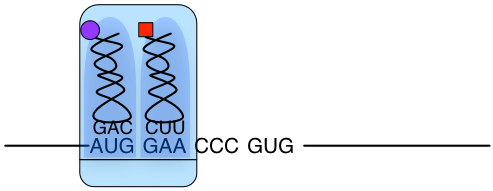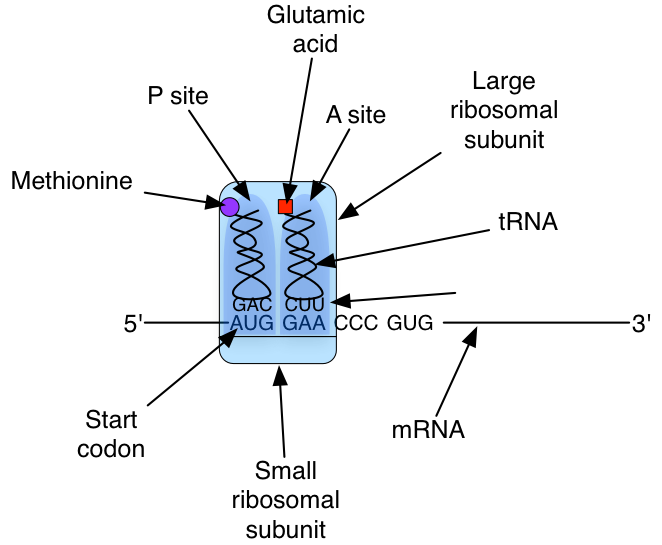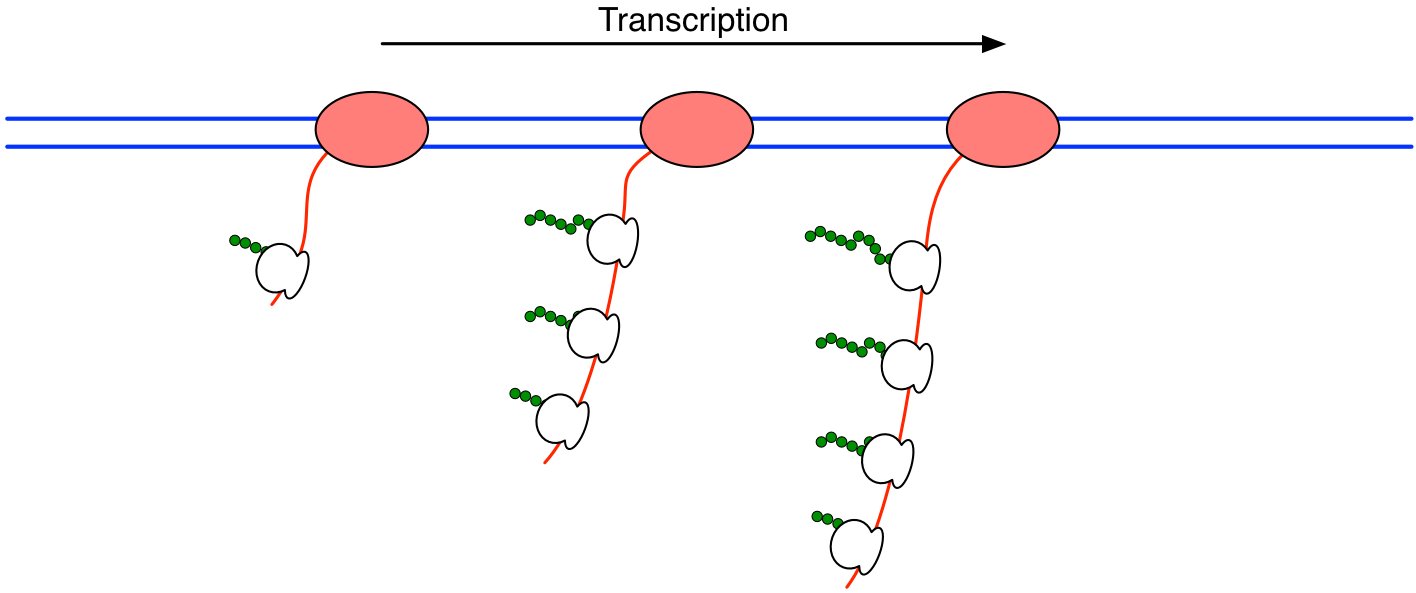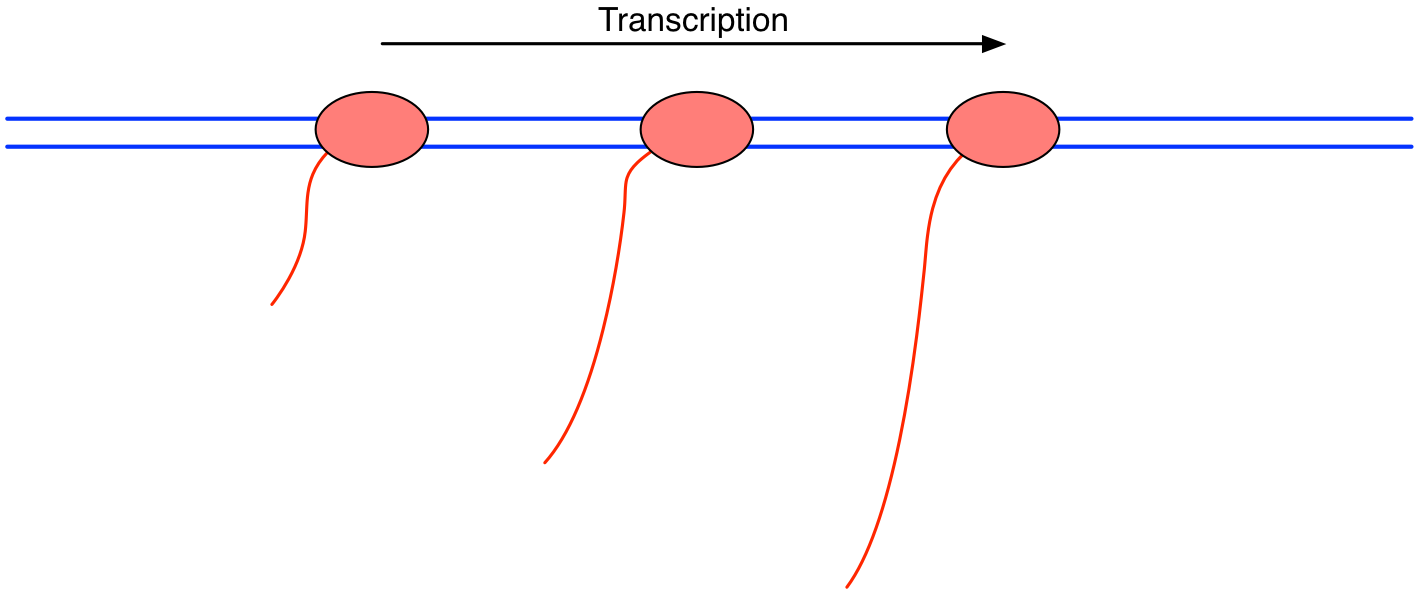- RNA molecules
- RNA polymerase and the process of transcription
- Principles of translation and the genetic code
- Translation in the ribosome
1. Before you begin this topic, you should review the structure of ribosomes, the structure and properties of nucleic acids (especially RNA molecules), and the structure of proteins. Make sure you have studied and mastered the principles of translation and the genetic code.
2. Let's start by studying what is needed for translation to occur. In order to synthesize proteins, a cell needs a template (information), an enzyme that can make proteins, energy, and the units of proteins (amino acids). Keeping this in mind, review your text and notes and answer the following questions:
- What is the template in translation?
- How is the template read (in what direction)?
- Where structure synthesizes proteins?
- How are amino acids brought to the site of protein synthesis?
- How does a cell know which amino acid should be brought next?
- How does a cell ensure that the correct amino acid is brought in?
3. The following is a diagram (the diagram is simplified and is missing some things in order to make it more clear) that shows the start of translation in a bacterial cell. Copy the diagram on a piece of paper, and as you are doing it, label everything that you can think of on it. Check your diagram by mousing over the word ANSWER below.

ANSWER

4. Review your textbook and watch the animation of translation provided on your class' blackboard site. On a piece of paper, write down a paragraph explaining how the ribosomes moves along the mRNA translating it into a protein. In your paragraph make sure to mention:
- How is the peptide bond made?
- How does the ribosome move (how many nucleotides at a time)?
- In which direction does the ribosome move?
- Every time the ribosomes translocates, what happens at the three sites in the ribosome (A, P, E)?
- When does translation stop?

5. Bacteria do not have a nucleus and their mRNAs are ready to be translated as soon as they are transcribed (even before they are finished). Thus, the processes of transcription and translation can occur simultaneously. Below is a diagram of a DNA molecule which is being transcribed by several RNA polymerases. Copy this figure on a piece of paper and draw ribosome translating the mRNAs, as well as proteins that are made in the ribosomes. Make sure that you account for the direction in which the molecules are being translated (so ribosomes closer to the start codon should have shorter polypeptides coming out of them, because they have been translating for a shorter time). Check your diagram against the answer below.

ANSWER
6. If you feel that you have mastered the concepts in this subunit, you can move to the next subunit, which deals with regulation of gene expression.